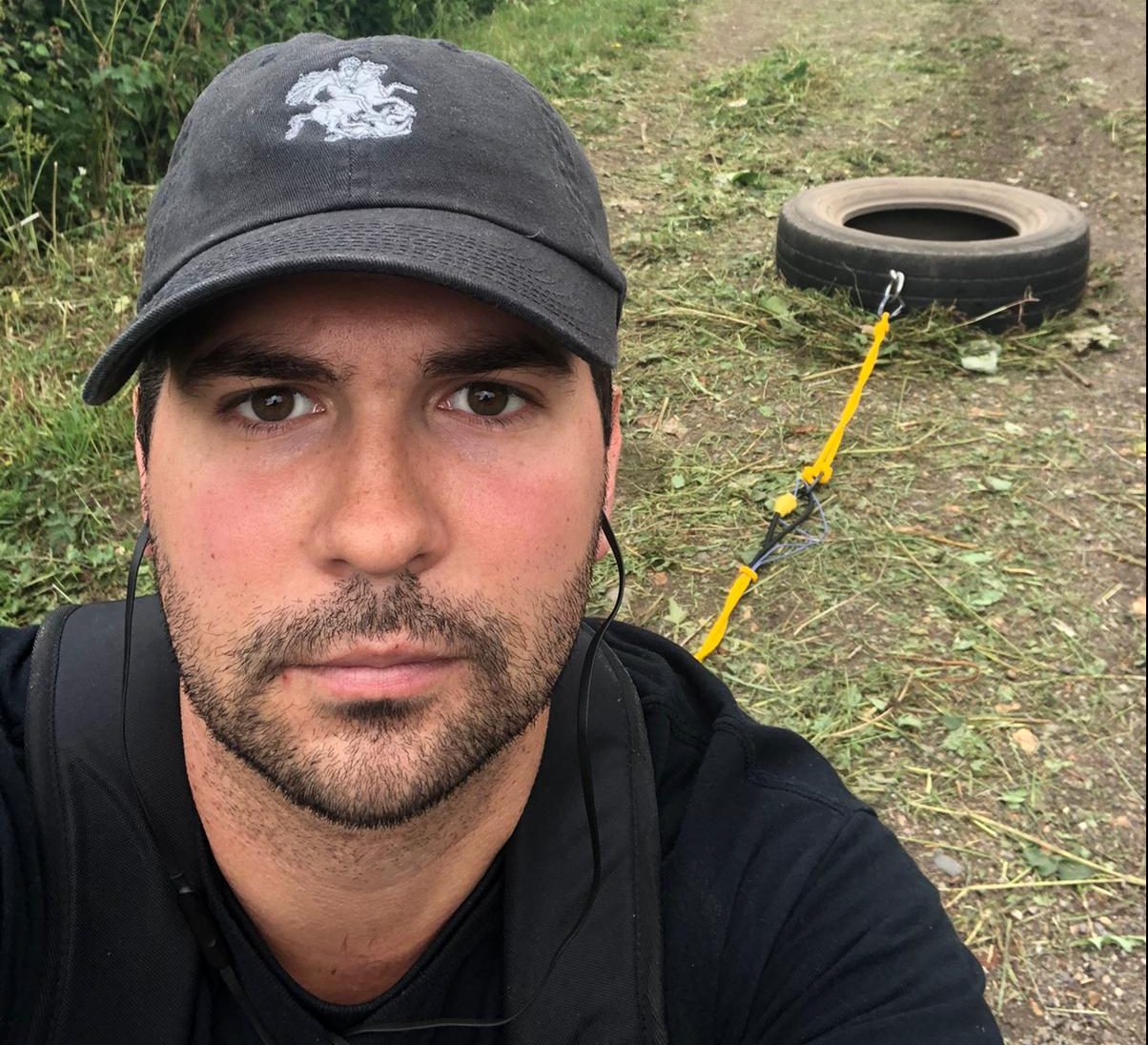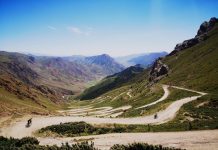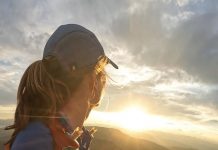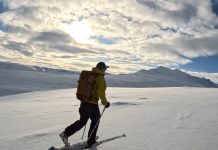1. Different surfaces mean very different things to a tyre: It’s difficult to describe the joy gained from seeing the newly tarmacked road you’ve been hauling on give way to loose gravel – finally, a lower friction surface to make some real progress! The humble tyre is more-or-less designed for one purpose – to grip the ground as effectively as possible. I estimate that I spend 20-30% more energy pulling tyres on tarmac compared to dirt tracks and mud, and about 10-20% more energy pulling tyres on dirt compared to loose gravel ona hard track. Grass is a bit more complicated – thick field grass? Tough. Well worn or cut, baked-dry park grass? Much better.
2. Your favourite weather changes – rain and ice are better than baking heat: Hot sun saps energy and softens tyres that then grip the road better. Cold, rain and ice have unexpected benefits, lowering the friction between harder, colder tyres and a road surface. The cold also helps keep me from sweating – much nicer to pull a tyre to keep warm than to be tempted to slow the pace or effort in an attempt to keep cool.
3. You’re endlessly guessing which tiny ridges on the path will cause a bone-crunching halt to the tyre pull: Nothing makes me feel like I’ve wasted energy like a tiny, insignificant lip created by a tree root or new piece of tarmac causing the entire tyre to instantly halt. The six inches of elasticated crumple zone my ropes and connectors give me doesn’t soften the blow much, and once you’ve turned back to drag the tyre over the obstacle, you then have to reset and get the tyre moving again from a standing start.
4. You acquire “little friends” along the way – some useful, others not so useful: Tiny stones, scraps of metal, leaves, sticks and other detritus can act as welcome items to roll over to reduce friction, while less welcome items either become trapped in the inside of the tyre, or gather in front of the tyre itself. You spend 10 minutes wondering why you’re suddenly making slower progress before realising you’re dragging half a bale of hay in front of your tyre.
5. Camaraderie from everyone else out on the trail is great, except perhaps from those driving cars: It’s hugely gratifying to hear support shouted from passing cyclists, runners, parents-with-buggies and just about everyone else I share the trails with. Most simply put a thumb up, while others stop to ask about the training, or the cause (The Prince’s Trust, in case you’d forgotten). The only exceptions are perhaps cars and horse riders. Nothing looks more terrified than a horse encountering its first tyre pulled noisily along the road by a sweaty wannabe-pack horse…
6. There are seemingly no end to the jokes people can make about a guy dragging a tyre: Granted, most people get a few minutes to slowly consider their joke as they see me move into view with my tyre, but the jokes are typically of the nature of “what happened to the rest of the car?”, or pointing out that I’ve “got a flat”. Some more inventive souls suggest rolling the tyre, or adding three more. All good fun.
7. You gain a new appreciation for any form of transport that doesn’t involve you hauling your stuff behind you. I found myself driving down tyre-pulling routes in wonderment that a car can accomplish in ten or fifteen minutes what I might take hours to achieve by foot.
8. You gain time pulling tyres, rather than lose it: While I rarely find a spare minute to think about anything other than the route, while cycling, the slow pace of tyre-pulling means that you quickly get used to the scenery and the mind is free to wander. Audio books solve some of the problem, but I’ve been making real efforts to calm my mind without recourse to my iPhone – I’ve been amazed at how much I’ve been able to think about in the same time window that I’d typically spend listening to music.
9. Small annoyances with kit become big problems: Tight shoulder strap? Slight friction between the back of the hip strap and the hip bone? Fold in your sock? Minor annoyances with kit quickly mount up to become big problems – however minor a kit problem might seem on minute one, on minute hundred-and-one those problems have only got worse.
10. Sweat management and training clothing are too important and under-loved by the fitness industry: I’ve really struggled to find the right balance with training kit – cycling / spandex-style shorts have been great, but I’m still struggling to find a training shirt that keeps me cool by wicking sweat away, but which also feels as comfortable as cotton. Nothing more annoying than either having a soaked cotton vest start to rub, or a polyester shirt cling to you unexpectedly. I’m working with a manufacturer to try and solve this problem – is there a compromise?
***
One final note – some may have seen the Instagram note, but I’ve named my training tyre Jocko, and have also added the numbers 4/39. Anyone who hasn’t listened to former Navy SEAL Jocko Willink’s “Jocko Podcast” should do so ASAP. Since around 2016 the podcast has been a clarion call to improve my own personal discipline in all aspects of life.
Similarly, one of Jocko’s early podcasts covered the book “Steel My Soldiers’ Hearts” by Col. David Hackworth. The story, an expansion of one part of his autobiography “About Face”, describes the transformation of the hopeless 4th Battalion 39th Infantry in Vietnam from “hopeless” to “hardcore” through the installation of basic discipline and effective training. Since reading the book and deciding on this expedition to Lake Baikal I feel strong parallels.
“You can’t make a unit proud by praising it and you can’t make a soldier proud by telling him how tough or good he is. That’s the superficial stuff. No pain, no gain. They had to earn it.”
More about Hackworth:
https://medium.com/fall-when-hit/what-would-hack-do-5036dc44698e
More about Jocko:
What would Hack do?
https://jockopodcast.com/all-episodes/
To Follow Ed’s journey https://www.breakingbaikal.co.uk/dispatches/







